Special to the Armenian Weekly
Javakhk, a Place Dear to the Heart and Truly Armenian… Yet Repeatedly Treated Unjustly
It was just two years ago that I realized how harsh the realities of Javakhk-Armenians are. And also for diasporans who visit, and Armenian citizens who attempt to cross the border into our rightful lands. Ultimately, the situation is most unjust for those who still live on our historic lands of Javakhk. Georgia, a critical neighbor bordering Armenia, is financially and politically fueled by Turkey and Azerbaijan; therefore, discrimination toward Armenians continues to this day.

Unemployment is rampant; gas, power, and water supplies are not commonly allocated to Armenian-populated regions; roads
are in disrepair; educational materials and Armenian schools have been destroyed; medical care is not properly provided; and mistrust on the part of government authorities is routine. But, despite all those challenges, the people of Javakhk continue to proudly preserve the spirit of the Armenian people and live on our rightful lands.
Javakhk is the only historically Armenian land, part of Historic Armenia, still predominantly inhabited by Armenians yet governed by foreign rule. It is now an Armenian region in the southern part of the Republic of Georgia. Continually populated by Armenians, it endured many invasions for hundreds of years—Arabs, Seljuks, Mongols, Ottomans, Russians, Persians—but always remained Armenian, with periods of self-rule.
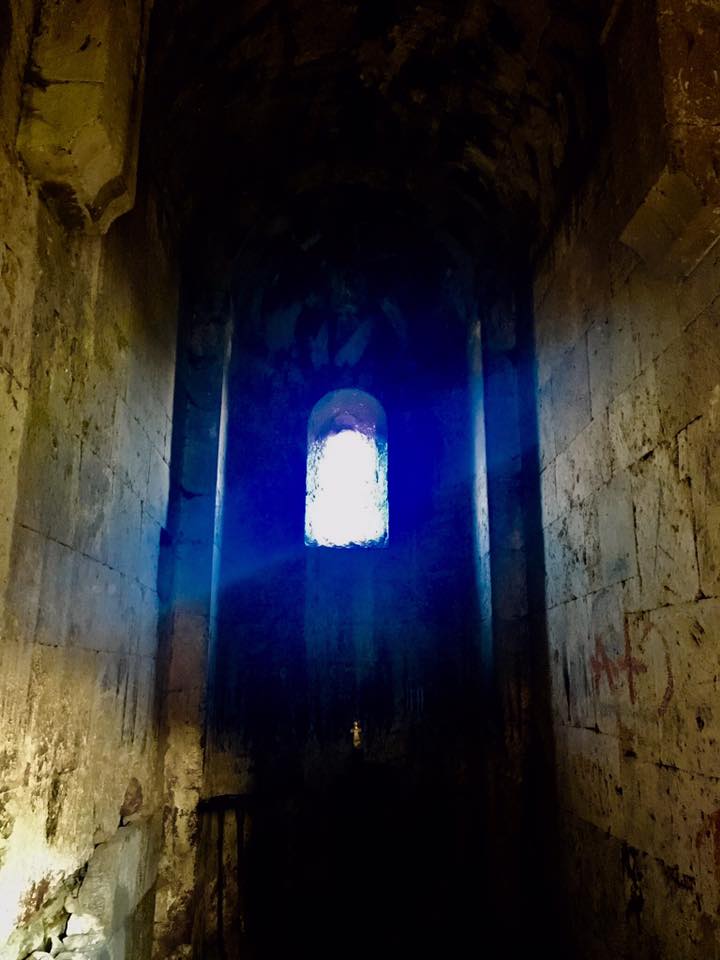
During the Armenian Genocide, Armenian refugees from Ardahan, Erzurum, and Basen sought refuge in the districts of Akhaltskha and Akhalkalak, creating over 50 new villages. When the Republic of Armenia was founded in 1918, a war was fought with Georgia that resulted in Armenians taking control over Lori while the Georgians gained Javakhk. Under Soviet rule, Armenians petitioned to secede and join Armenia, but they were ignored by the Soviet authorities. To this day, an estimated 200,000 Armenians live in Javakhk.
For the last three summers, I had the opportunity to help organize and participate in Camp Javakhk—a program organized by the Armenian Relief Society (ARS) and Armenian youth of the Eastern Region of the U.S. I have also had the pleasure to serve as an active member of the ARS Javakhk Fund. Over the last six years, we have hosted day camps for local Armenian youth in five towns, serving over 500 children each summer.
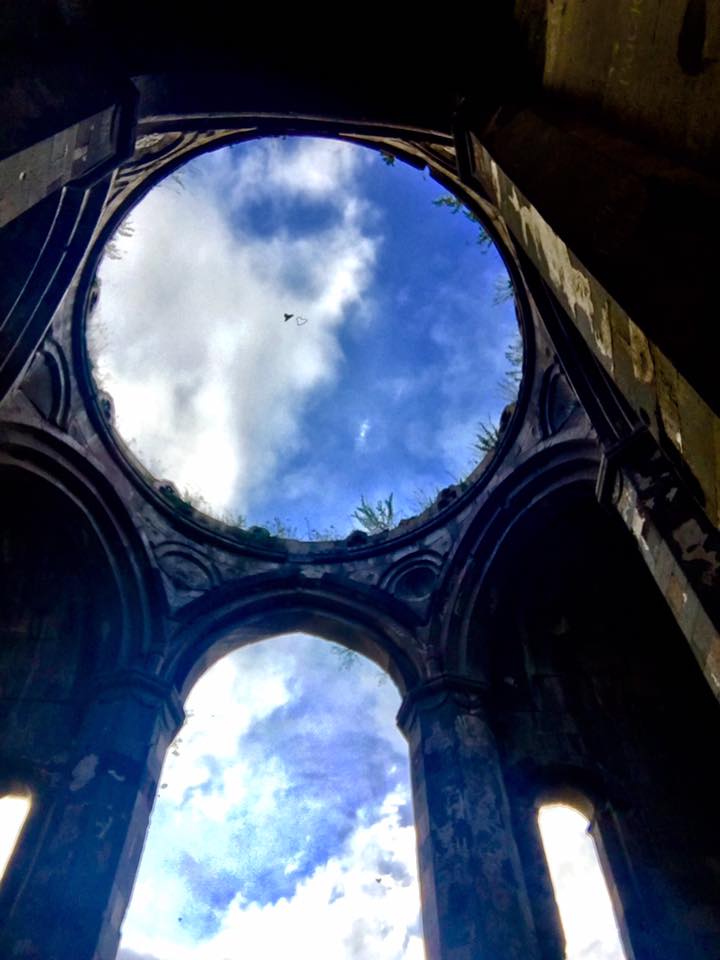
Every summer, Armenian-American youth travel to Javakhk with the objective of teaching Armenian culture, dance, songs, English, basic health, arts and crafts, and so much more. As we share our education with the youth of Javakhk, we have created lifelong friendships with the local youth and community leaders. With our new friends, we have hiked through the beautiful landscapes and lit candles in our weathered churches.
And through this opportunity we have witnessed first-hand the dangers and difficulties the local Armenians experience on a daily basis.
One of our many excursions included the quaint and quiet town of Gumburdo (Kumurdo in Georgian), with a population of about 2,000 descendants of Western Armenian refugees, most of whom hailed from Erzerum. A town always so friendly, where our new friends would call each lady we passed on the road horkur (paternal aunt), that it truly felt as if we were among our extended family; each person was ready to help with directions and join our adventure.
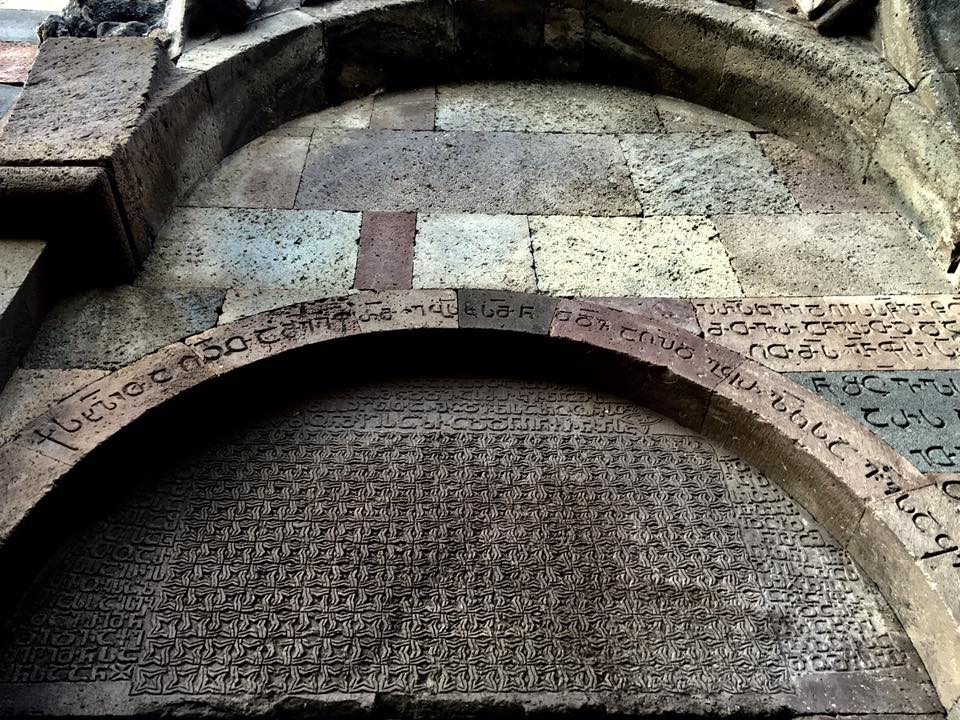
There, we came across a church called Surb Hambardzum (Holy Ascension), believed to be both Armenian and Greek (Chalcedonian), founded by Bishop Hovhanness in 946. With no doors, ceiling, or scriptures maintained, what is left of the church is fully open to the elements, yet still frequented by the local community as it continues to stand proudly in the heart of the town. Upon walking around the church and imagining its original beauty, we noticed boxes of bones tucked to the side. The locals informed us that a few years ago Georgian authorities displaced the bodies of Armenian priests from the church’s soil in order to make room for new construction. To this day, the property remains empty, with no promise of construction in sight, leaving the bones of our ancestors out in the open, as if to taunt us.
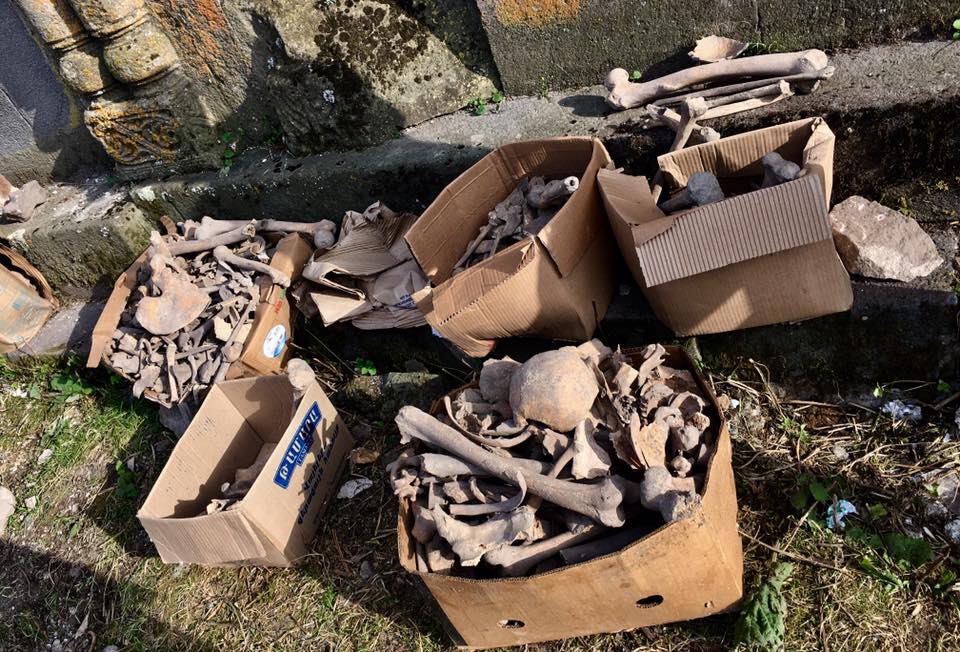
The displacement of our ancestor’s bones was not the first nor the last of the unexplained and unjust discriminatory actions against Armenians carried out by Georgian authorities.
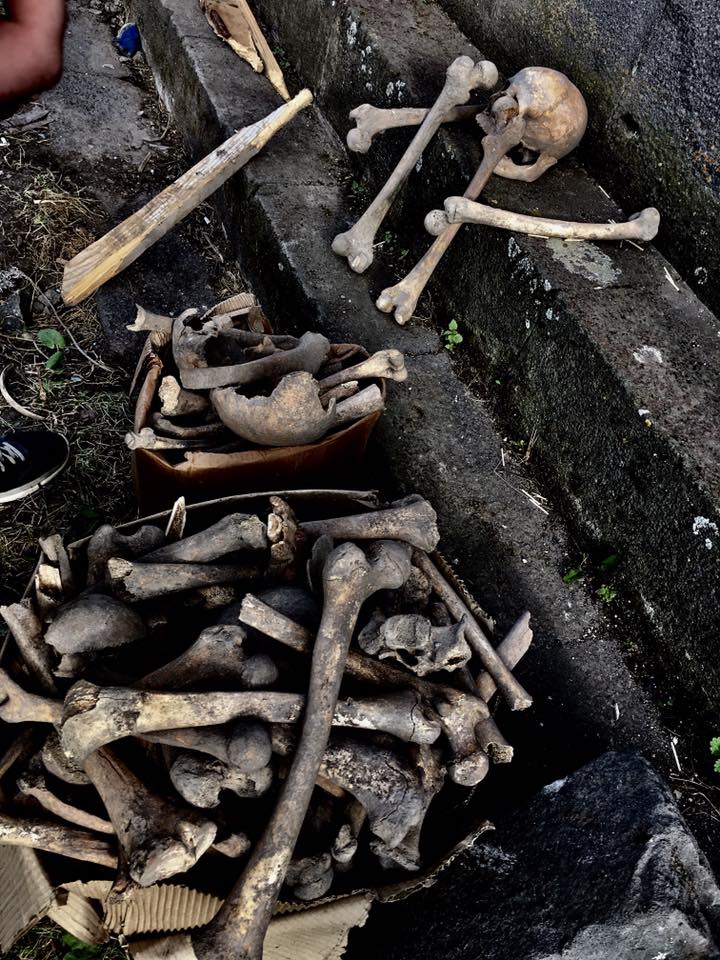
On Sept. 30, Armenians attempted to place a khachkar (cross-stone) next to Surb Hambardzum church, but were unexpectedly stopped by the Georgian police, who claimed the residents did not have permission to place a khachkar on their own property. As the community moved forward with their attempt, the Armenians of Gumburdo were beaten by Georgian police and stoned, resulting in multiple injuries. Although the co-chair of the unregistered Georgian Virk Party had discussed an agreement with Georgian authorities regarding placing the monument, Georgian authorities claimed formal authorization was not given.
(Video of the incident is available below. Warning: video contains scenes that some viewers may find disturbing.)
Earlier this month, certainly under much pressure, the Georgian Diocese of the Armenian Apostolic Church affirmed that it had no aspirations toward the temple and that it considers it to be Georgian. A joint statement with the Georgian Patriarchy and Georgian authorities was then made, affirming readiness to “discuss the issues” and “make decisions with mutual consent,” while condemning violence.
Gumburdo is one of the many beautiful Armenian villages on our territory of Javakhk that is treated unjustly. And this is just one of many stories of its kind.
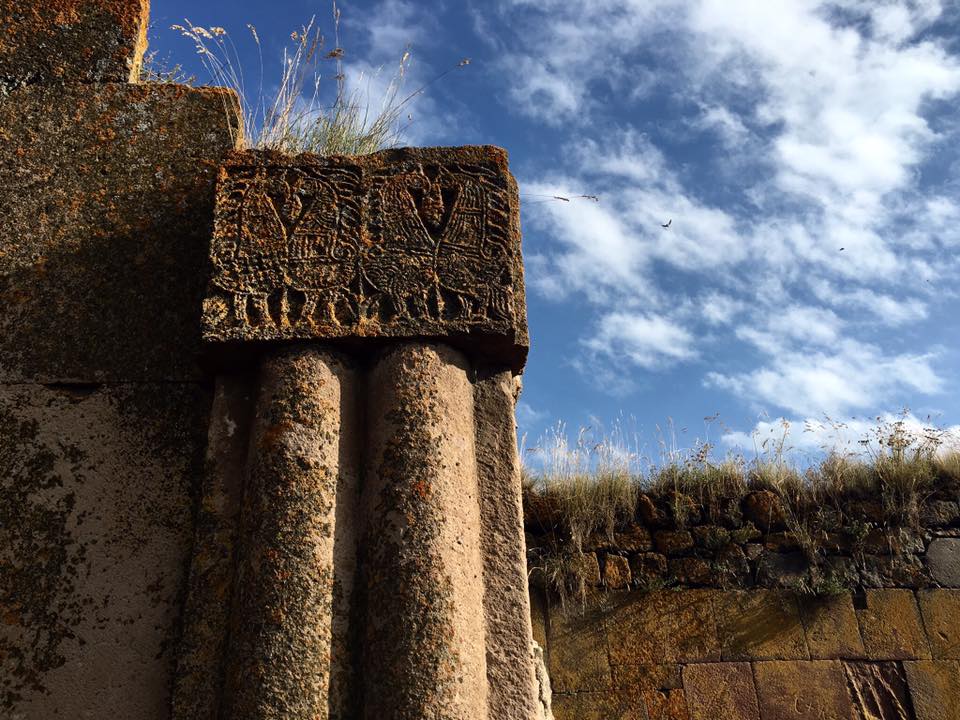
It is no secret that Armenians living in Javakhk are in an uphill battle to sustain their culture and to continue to inhabit our ancestral lands. Despite the difficulties imposed on them, the fight of the Armenians of Javakhk is just, and we cannot allow it to be waged alone.
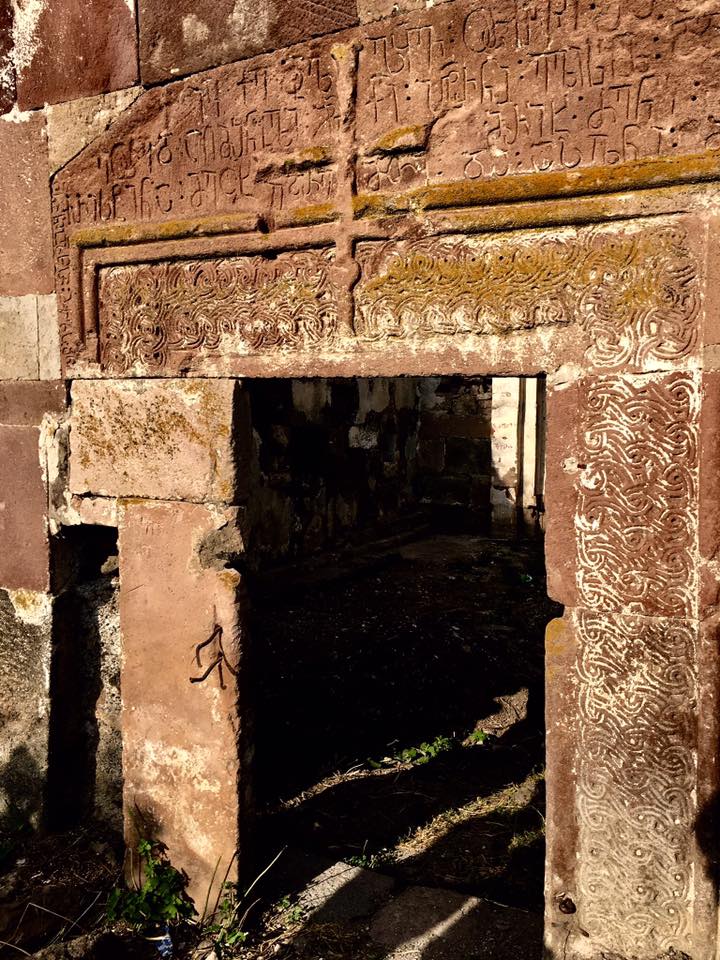
I hope for a day when those harsh actions are properly addressed by the local authorities, and Armenians are able to live in unity and peace on their historic land—a day when we are free of others’ hatred and our own fear.


Beating up peaceful Armenians by armed Georgian police not to be tolerated. A direct result of a weak government in Armenia.
[A Georgian viewpoint:] “Church of Georgian-Armenian discord”
http://vestnikkavkaza.net/interviews/Church-of-Georgian-Armenian-discord.html
From archeologist Samvel Karapetyan’s Facebook post (https://www.facebook.com/berdagh/posts/737726239745709):
Այժմ Կումուրդոյի Սբ. Համբարձման եկեղեցու վերջին դեպքերի և մասնավորապես Վրաստանի մի շարք կառույցների համատեղ հայտարարության մասին, որ արվել է 05.10.2017 թ.:
Ճարտարապետական հիասքանչ կառույցը վեր է հառնել Ժ դարում, որպես եպիսկոպոսանիստ եկեղեցի, այսինքն` երկրամասի ուղղափառ եկեղեցու առաջնորդանիստ, թեմի կենտրոնատեղի: Կառուցվել է տարածաշրջանում ի դեմս Բյուզանդիայի և Վրաստանի ուղղափառության վերելքի և նրա ունեցած ամենամեծ ազդեցության ժամանակաշրջանում, հոծ զանգվածներով ուղղափառ դավանանքի հետևորդ դարձած Մեծ Հայքի Գուգարք նահանգի Ջավախք գավառում: Շուրջ երեք հարյուր տարի այս եկեղեցին (ինչպես և նույն ժամանակաշրջանում կառուցված տարածաշրջանի բազմաթիվ այլ եկեղեցիները) գործել է որպես ուղղափառ: Սակայն, ԺԳ դարի վերջերից պայմանավորված հավատակից երկու երկրների` առաջին հերթին Բյուզանդիայի թուլացմամբ և ապա անկմամբ ու նաև Վրաստանի թուլացմամբ և մանր թագավորությունների` տրոհմամբ, արդեն ԺԴ-ԺԵ դարերում Սբ. Համբարձման եկեղեցին դադարել է գործել որպես ուղղափառ եկեղեցի: Կառույցի շուրջ (և ընդհանրապես գյուղի ողջ տարածքի զանազան հնավայրերում) առկա ԺԴ-ԺԷ դարերին վերաբերող խաչքարերը, որոնք կոտրված կամ ամբողջական տեղահան դրությամբ պահպանվել են հուշում են, որ եկեղեցու շուրջ ուշ միջնադարում գոյացել էր հայոց գերեզմանոց: Ինքնին հասկանալի է, որ հայոց գերեզմանոցը կարող էր գոյանալ միմիայն հայ առաքելական եկեղեցու շուրջ, իսկ ինչպես հայտնի է Ժ դարում կառուցված եկեղեցին ի սկզբանե եղել է ուղղափառ: Ուրեմն ի՞նչ էր տեղի ունեցել: Իրականում տեղի է ունեցել այն, ինչին ականատեսն ենք հյուսիսային Հայաստանի զանազան այլ բնակավայրերի եկեղեցիներում և վանքերում, այսինքն` ուղղափառության անկման ժամանակաշրջանում, երբ այլևս այդ դավանանքի հետևորդ մնալը հայերի համար ոչ մի առավելություն չէր ապահովում (այլևս «պրիստիժ» չէր), տեղի է ունեցել զանգվածային դարձ` դեպի հայ առաքելական եկեղեցին, որի արդյունքում անշուշտ նաև Կումուրդոյի Սբ. Համբարձման եկեղեցին է վերաօծվել առաքելական եկեղեցու ծիսակարգով, որից հետո էլ եկեղեցու շուրջ` համաձայն հայ առաքելական եկեղեցիների ծիսակարգի սկզբնավորվել է հայոց գերեզմանոցը:
Որ Կումուրդոի բնակիչները գոնե ԺԴ-ԺԵ դարերից ի վեր առաքելադավան հայեր էին վկայում են ոչ միայն եկեղեցու շուրջ եղած հայոց գերեզմանոցը, այլև 1595 թ. թուրքական հարկացուցակները, որտեղ հիշված են հայկական շրջանակներում տարածված բազմաթիվ անձնանուններ: Ի դեպ, Կումուրդոն Ջավախքի սակավաթիվ այն գյուղերից է, որ 1829-30 թթ. Բարձր Հայքից փոխադրված հայերի մի մասի այստեղ հաստատվելու պահին ուներ բնիկ հայ բնակչություն (երլականներ, այսինքն` տեղացի հայեր), որոնց որ նույնիսկ մինչև մեր օրերում ճանաչում են ըստ ազգատոհմերի:
Իհարկե որոշակի նորոգություններից հետո (մասնավորապես եկեղեցու արևմտյան խաչաթևը փայտամածով ծածկելը, հյուսիսային կողմում մկրտարան տեղադրելը և այլն) 1830-ական թթ. այս եկեղեցին ևս մեկ անգամ օծվել է և գործել ևս համարյա մեկ դար (մինչև 1920-ական թթ. կեսերը), որից հետո չի գործել, բայց մշտապես մնացել է տեղացիների հոգածության ներքո: Ի դեպ, եկեղեցամերձ գերեզմանոցում էլ թաղումները շարունակվել են նաև ԺԹ դարում և 1900-ականների սկզբներին:
Ասվածից հետևում է, որ Կումուրդոյի Սբ. Համբարձման եկեղեցին ունեցել է պատմության երկու կարևոր փուլերը: Առաջինը կառուցման ժամանակից մինչև ԺԳ դարի վերջերը, այսինքն` մոտ 300 տարի, երբ գործել է որպես ուղղափառ եկեղեցի (ըստ ամենայնի ծառայելով ուղղափառությանը անցած տեղացի հայերին) և երկրորդ` ԺԴ դարից մինչև Ի դարի սկզբները, այսինքն` ավելի քան 600 տարի, երբ գործել է որպես հայ առաքելական:
Վերջում ցանկանում եմ նկատել տալ, որ եթե, օրինակ, ի սկզբանե առաքելադավան հայերի կողմից կառուցված Թբիլիսիի Կուսանաց Սբ. Ստեփանոս, Հավլաբարի Սբ. Կարապետ, Վերայի Սբ. Խաչ և այլ հայկական եկեղեցիները, որ 1990-ական թթ. ուղղափառ եկեղեցու ծիսակարգով վերաօծվելուց հետո կարող են արդեն 25 տարի համարվել և գործել որպես վրացական եկեղեցիներ, ապա ինչու մի հայաբնակ գյուղում առնվազն 600 տարի որպես հայ առաքելական գործած եկեղեցին այսօր չի կարող համարվել հայկական և ծառայել տեղի բնակչությանը, սա ի՞նչ խտրական վերաբերմունք է Վրաստանի ազգությամբ հայ քաղաքացիների նկատմամբ:
Մեզ համար անհասկանալի է հատկապես Վիրահայոց թեմի կեցվածքը, որը փաստորեն հրաժարվել է զուտ հայաբնակ գյուղում գտնվող մի եկեղեցուց, որը որպես հայ առաքելական եկեղեցի այդ գյուղի ծխականներին է ծառայել առնվազն 600 տարի և ինքնաբերաբար անքակտելիորեն կապված է հայ առաքելական եկեղեցու պատմությանը:
Հայոսն ու Քարթլոսը եղբայրներ են, ուստի խնդիրները պետք է լուծվեն եղբայրական սիրով, միմյանց նկատմամբ հարգանքով ու փոխըմբռնմամբ:
Եղբայրները` ո՛չ թե իրար, այլ` միասին պետք է հաղթեն…
Ս. Կարապետյան
georgians are Erdogan’s puppets and they deserve whats coming to them.
Dear Carnie Armenian, I think we are heroo askakan, but that doesn’t make me convinced and positioned of the idea that you are trying to reach through the article. Just a look at what I commented on FB under the post:
“With all due respect to the work done by Camp Javakhk, why would the diaspora teach the children (who already know Russian and Armenian) English? Why not bring a specialist who would teach them Georgian since one of the reasons that Javakhk Armenians feel themselves foreigners in their own country and thus not integrated in the broader sense of Georgian society is the fact that they don’t excel in the national language.
Returning to the main topic of the article, please note that this is not and should not be perceived as cultural genocide. This is not Julfa. Please, I want you to translate me the inscriptions on the church walls. Oh, well you can’t [unless you are a linguist]. Because although similar to the ancient Armenian script where all of the letters would have been written in upper case, the inscriptions are in Asomtavruli. However, this does not legitimize the fact that it has always been Georgian, since Armenians in the border regions were Chalcedonic and because this Christian ideology was not nationalized, these Armenians were deemed to be Byzantine or Georgian.
Also note that this kind of nationalism picturing all Armenians living under non-Armenian rule as victims will not further our well-being and it surly will not strengthen the bond between the Diaspora and the RoA, since the latter wants good relations with the remaining countries whose borders are open. Less than 1% of the Diaspora has once heard about Javakhk and a smaller proportion knows about the poverty-stricken situation of the locals. This does not mean we should turn a blind eye to it, actually we should do the opposite, be optimistic and find the best solutions to nourish the financial, educational and societal circumstances of Armenians in Georgia.”
I feel that we mustn’t fuel this unnecessary Armeno-Georgian tension that will be to the benefit of you know who.
The photo clearly shows a bilingual inscription over the entrance tympanum – Armenian alphabet on the left, Georgian on the right. Doubtless, there will be some chiseling out of the former if it falls under the direct control of the Georgian Church. The modern label “Georgian” cannot be legitimately applied to this building. Ironically, both Georgia and Armenia have identical backward laws regarding the historical monuments of Christian origin on their territories. In Georgia, by Georgian law, they all belong to the Georgian Church, which can do whatever it wishes to them without consultation with archaeologists or conservationists or state authorities. In Armenia, by Armenian law, they all belong to the Armenian Church, which can do whatever it wishes to them without consultation with archaeologists or conservationists or state authorities. These near identical laws were introduced in the immediate post-independence period by corrupt regimes seeking support and silence from religious leaders. They allow historical monuments that should be protected to be appropriated and misused by modern nationalist ideologies, religious dogmas, and politics.